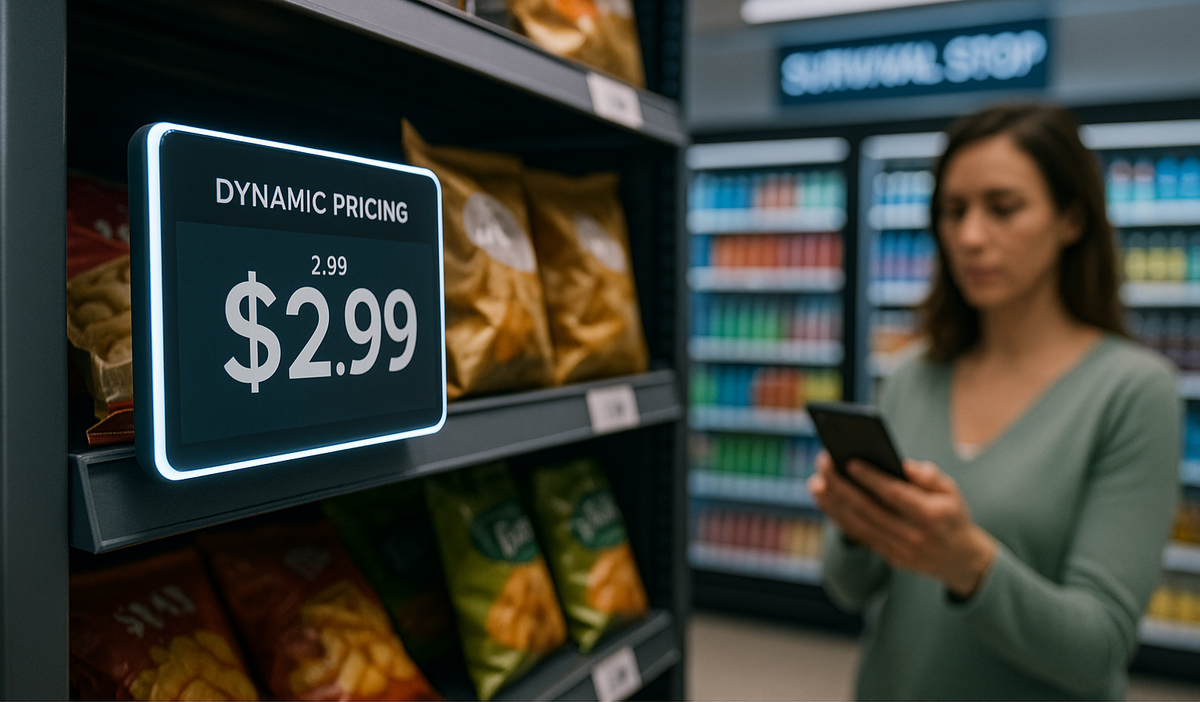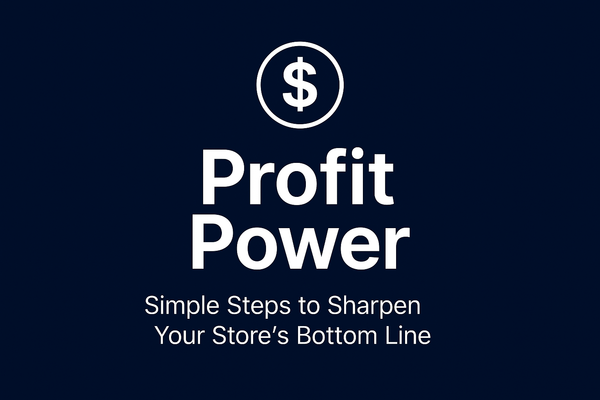Dynamic Pricing in Convenience Stores
Dynamic pricing adjusts product prices in real-time based on demand, inventory levels, competition, and weather. After implementing dynamic pricing, stores see improved fuel margins, reduced food waste, and better customer satisfaction through strategic price flexibility.

When Tariq Osei first heard about dynamic pricing at a convenience store conference, he thought it was too complex for his three Survival Stop locations. But after watching competitors adjust gas prices multiple times daily while he changed prices once weekly, Tariq realized he was missing opportunities.
"I kept thinking dynamic pricing was just for Amazon," Tariq recalls. "Then I saw our competitor using it for fuel and food. They were capturing price-sensitive customers while I was stuck with yesterday's pricing."
Six months after implementing dynamic pricing, Tariq's stores saw fuel margins increase 12%, food waste drop 34%, and customer satisfaction improve. The key wasn't just technology - it was using pricing flexibility strategically.
What Dynamic Pricing Means for C-Stores
Dynamic pricing adjusts product prices in real-time based on demand, inventory levels, competitor actions, weather, and customer behavior. Instead of fixed prices unchanged for days, stores respond immediately to market shifts.
Real-time responsiveness captures maximum value during high-demand periods while preventing lost sales through strategic discounting during slower times.
Inventory optimization reduces waste by automatically adjusting prices on perishables as expiration dates approach, or stock levels become excessive.
Competitive positioning enables stores to match or differentiate from competitors without manual monitoring.
Aisha Nakamura learned this at her urban store: "During lunch rush, sandwich prices increase slightly because demand is guaranteed. At 3 PM, when office workers are back, prices drop to attract afternoon snackers. It's about maximizing revenue from every hour."
Technology Behind the Strategy
Dynamic pricing relies on interconnected systems that collect data, analyze patterns, and execute price changes automatically.
Data collection monitors sales velocity, inventory levels, competitor prices, weather, and traffic patterns in real-time. This feeds analytical engines that identify pricing opportunities.
AI algorithms process data to predict optimal pricing for different products at different times, learning from past performance and refining recommendations.
Digital displays enable instant price updates. Electronic shelf labels and integrated POS systems ensure consistency without manual updates.
Chen Wei-Ming's system illustrates integration: "When we're low on an energy drink flavor, prices rise slightly to slow demand until delivery. With excess inventory nearing expiration, prices drop automatically. It happens based on rules we've set."
Real-World Applications
Fuel pricing adjusts multiple times daily based on wholesale costs, competition, and demand. Operators match competitor pricing during low-demand periods but capture premium pricing when traffic is heavy.
Fresh food optimization prevents waste while maximizing revenue. Coffee prices drop during afternoon lulls, while sandwich prices increase during lunch rush. Automated discounting moves inventory before expiration.
Beverage management responds to weather and events. Cold drinks cost more during heat waves, energy drinks increase during college exam periods, and prices drop during slow afternoons.
Priya Blackwood's seasonal success: "When forecasts show rain, umbrella prices automatically increase because demand spikes. During three cold days, ice cream prices drop to move inventory before demand disappears."
Strategic Benefits
Revenue optimization captures maximum value during high-demand periods while maintaining volume through strategic reductions during slower times.
Inventory efficiency improves as pricing responds to stock levels and expiration dates, reducing waste while ensuring adequate margins.
Competitive responsiveness keeps stores aligned with market conditions without constant manual adjustments.
Customer satisfaction can improve when implemented transparently. Customers appreciate finding deals during off-peak periods and understand higher prices during obvious high-demand situations.
Fatima Al-Zahra's results: "Customers love discounted afternoon coffee and don't mind paying more during morning rush for fresh, hot products and fast service. Transparency about pricing logic built trust rather than complaints."
Implementation Challenges
Technology investment represents the largest hurdle - quality systems can cost tens of thousands initially for software, hardware, and integration.
Staff training becomes crucial since employees must understand and explain price changes to customers effectively.
Customer communication requires careful attention to avoid perceptions of price manipulation. Clear explanations and trained staff prevent service problems.
Kwame Asante's approach: "We started with just fuel and one food category to test the system and train staff. Once everyone was comfortable and customers understood our approach, we expanded. Taking it slow prevented relationship damage."
Customer Psychology
Transparency builds trust when stores clearly communicate pricing philosophy and influencing factors. Customers who understand the logic typically accept variations more readily.
Value perception improves when customers recognize they can find deals during off-peak periods. Many convenience shoppers actively seek discounted items.
Fairness expectations require balance between maximizing revenue and maintaining reasonable pricing that doesn't exploit customers during emergencies.
Isabella Moreau's learning: "Customers accepted coffee prices changing throughout the day but wanted cigarette prices consistent. Understanding which products need stability versus variability was crucial."
Getting Started
Start small with one or two categories that have clear demand patterns and low price sensitivity. Fuel and prepared foods work well initially.
Set clear rules for price change limits and circumstances. Predetermined boundaries prevent algorithm errors or extreme swings.
Train thoroughly before implementation, ensuring staff can explain changes confidently.
Monitor closely during initial weeks to identify and fix problems before they become serious challenges.
Viktor Petrov's strategy: "We began with coffee, varying prices by $0.25 daily based on demand and inventory. Once we proved it worked without complaints, we gradually expanded using the same careful approach."
The Bottom Line
Dynamic pricing represents a fundamental shift in how convenience stores optimize revenue, manage inventory, and respond to market conditions. When implemented thoughtfully with appropriate technology and customer communication, it delivers significant profitability and efficiency improvements.
Success lies not in technology sophistication but in understanding customer needs, market dynamics, and operational realities that make pricing flexibility valuable. Stores focusing on solving real business problems through responsive pricing typically achieve better results than those pursuing trends without purpose.
For operators willing to invest in necessary technology and training, dynamic pricing offers a powerful competitive tool while serving customers better through more responsive, market-appropriate pricing strategies.





